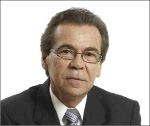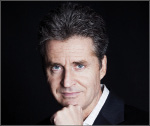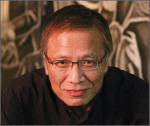


![]()
ONLINE
The Engine of Growth

Editors’ Note
Miles Young assumed his current position January 1, 2009. During the previous 13 years, he ran Ogilvy in Asia-Pacific. Beyond his Ogilvy position, Young had a dual role, operating where appropriate as de facto WPP Chairman in the Asia-Pacific region. Before moving to Asia in 1995, Young had 12 years experience in Europe. He began his marketing career in the early ’80s at Lintas and at Allen, Brady & Marsh before joining Ogilvy & Mather in 1983. In 1990, he moved over to lead Ogilvy’s Direct operations in Europe, ultimately as Chairman. Young is a graduate of Oxford University where he obtained a degree in history. He has lectured and written widely on integrated marketing.
Company Brief
New York-based Ogilvy & Mather (www.ogilvy.com), a subsidiary of WPP (NASDAQ: WPPGY), is one of the largest marketing communications companies in the world. Through its specialty units, the company provides a comprehensive range of marketing services including: advertising, public relations and public affairs; branding and identity; shopper and retail marketing; health care communications; and direct, digital, promotion, and relationship marketing. Ogilvy & Mather services Fortune Global 500 companies including: American Express, BP, British Airways, Coca-Cola, Cisco, DuPont, Ford, IBM, Kodak, Lenovo, Motorola, Nestlé, SAP, Unilever, UPS, and Zurich, as well as local businesses through its network of more than 450 offices in 120 countries.
In terms of the global economic crisis, how much of an impact have you seen on Ogilvy’s business in general and where do you see us today on the road to recovery?
The impact on us has been pretty much the same as on everyone else. The global agency sector probably dropped by about 10 percent last year, and we’re not going to see a real return to growth in the first half of 2010; it will be rather like the last half of 2009. My bet on a return to growth will be in the the third or last quarter of 2010. So that’s a real revenue decline, and takes some steam out of a business that had been growing very nicely over the past decade or so.
In spite of the recession, the BRIC markets are growing and have reacted very quickly. How much of a focus have those markets been for Ogilvy, and can you give a brief overview of your business in each of those areas?
The BRIC markets were not immune from this recession. In our business, we could see that in China, there was a pretty severe impact; in India, a milder impact; in Russia, it was actually quite good; and Brazil was hardly affected. So there is a kind of differential pattern in the BRICs, but none of that, in any way, makes us question our fundamental strategy for the BRICs in the future. They’re a huge portion of our corporate growth strategy. We’ve just written a five-year plan in which the BRICs are absolutely fundamental – they are going to be the engine of our growth.
One can start to see innovation and initiatives coming out of Asia now and their impact on our businesses in Europe and the U.S.; no longer is everything exported from London or New York. That creative work is exported now from Beijing, Shanghai, or Bombay to other parts of the world is a very significant change from even five years ago.
The next wave of that will be the arrival of BRIC brands. Chinese brands are already starting to gain some real critical mass after dealing with the organizational problems of going to a global market. The Indian brands are also starting to gather force in the automotive sector, as well as others. For Brazil, the Rio Olympics will catalyze the arrival of some Brazilian brands in the global marketplace. So even if you think 20 years ahead in terms of global brand share by country of origin, I believe you’re going to see a very different picture to what we’ve seen since the Second World War.
In terms of talent, how has the business evolved in those markets, and are you primarily looking for more local workers?
Our policy is to try to avoid using expatriates as much as we can. In a market like China, where the business has grown so fast, that isn’t dogmatically followed, because there is also the need to have some qualified expatriate staff. But the trend is turning. I see those BRICs now as a source of talent for the rest of the world. The whole world has moved a long way from the point where those markets could only be specially developed by expatriate management. Where there are expatriates, they are usually adding very specialized skills, and in that sense, are useful and valued. But the BRICs are a source of talent for the global marketplace in the future, and we put an emphasis on training young BRIC staff to be globalists.
For Ogilvy, how close is coordination region to region? Are you trying to offer a seamless platform, or is the focus more on a specific market?
Historically, it has been very much by that specific market, but I believe that they should be looked at much more seamlessly. So one of the things I set up is a BRIC community, which is designed to encourage sharing and also common information sources, so a client can see the data on a comparable basis between the BRICs, which they often find difficult to do. The future is moving in that direction.
I have one word of caution: we’re talking about BRICs and there are a number of markets just below BRICs – Indonesia, Turkey, Colombia, Vietnam, Pakistan, Iran, Peru, and maybe Romania – that are becoming almost as important to clients as BRICs and are displaying many of the same characteristics. They may not be absolutely as big or quite as developed, but they’re the next generation. These are countries clearly separating from the rest of the pack. So we have to be watchful not to allow BRIC to be a silo within itself but to also recognize there are other candidate countries coming up that have developed so much faster than you would have imagined from the time when Goldman Sachs first coined the phrase “BRIC.”
As you look at 2010, speaking on the global platform but also broadly for the firm, what are the dominant priorities for you to make sure Ogilvy retains that leadership position and continues the growth?
My slogan will be, “Fish where the fishes are.” That’s in both specialisms, such as digital data, which is growing very fast in our business, and consulting, and also in terms of the creative product itself, which is not just a shoal of fish but a shoal of whales. Add on to that a regional focus, which is the BRICs. If you can build a digital business in BRIC, you’ve got a real sweet spot.

Can you provide an overview of Ogilvy & Mather’s business in Brazil?
Ogilvy Brazil is one of the biggest advertising, marketing, and communications groups in the Brazilian market. Following the philosophy of our 360 Degree Brand Stewardship®, we have strong teams in each one of our disciplines and business units: advertising (Ogilvy & Mather); direct and digital marketing (OgilvyOne, OgilvyInteractive, and Neo@Ogilvy); shopper and trade marketing (OgilvyAction); and public relations (Ogilvy PR).
How does Ogilvy & Mather differentiate itself from its competitors in Brazil?
Our capability of delivering multiple services and high-quality standards as well as the emphasis we place on creativity are our most important strengths in the market. Also, our digital capabilities are one of our biggest assets.
How do you go about finding local talent for the firm?
We always pay close attention to the local talent and bring those professionals to the group who make a difference in our market.
How has Brazil been impacted by the global economic downturn?
The economic recession did not impact Brazil as hard as other countries. It provided us with an opportunity to grow with our clients and win new accounts during 2009.
What are the key priorities for Ogilvy & Mather in Brazil in 2010?
One of our key priorities is bringing innovations in the digital world to clients. People are communicating in a very fast way, via Internet and mobile. Now that the consumer has the power, brands must find strategies to get consumers’ attention in this context. Because of that, together with New York, London, Singapore, and Beijing, Brazil is home to one of the five Ogilvy Digital Labs. Ogilvy was the first Brazilian agency to have a digital lab.

How has business in Russia been affected by the economic downturn?
We are better as a result of the recession. The global recession has had a major impact on the Russian advertising market. Shrinking marketing budgets resulted in the total market decreasing by 30 percent. The Ogilvy Group in Russia was well-positioned to weather the recession and has grown by more than 5 percent, making it the second largest communication group in Russia. It managed to expand its portfolio of local business in terms of revenue by 54 Percent. The group offers a portfolio of 360 communication services ranging from classical and digital communication to shopper and trade marketing, enabling it to compensate for shifts in client spending away from traditional media to digital or to shopper marketing. Since the recession, clients in Russia have been looking for better value for money to optimize the impact of their marketing budgets. Ogilvy Group Russia’s 360 offer has meant that clients profit from many synergies that only optimally bundled communication services can provide.
Our group has also benefited from the growing importance of the Russian market in Europe. Several major Ogilvy clients have made Russia their hub for the development of marketing and communication programs. Ogilvy Group Russia develops 360 programs based on consumer insights, which are gathered and analyzed by our team of local strategic planners. A highly relevant creative idea is the quintessence of every good communication program. In order to guarantee this, we have the executive creative director for CEE based in Russia. He not only utilizes the resources in Russia, but also calls upon teams in other CEE countries to participate in developing the best idea and program for our clients.
All in all, the recession has not hindered but has helped Ogilvy Russia to develop beyond its international focus, making it a stronger, local force in the market.

Can you provide an overview of Ogilvy & Mather’s business in India?
Ogilvy is a 360 agency in India, offering complete communications solutions including advertising, one-to-one (including online), public relations and activation (including retail and ground activation), green communication, and health care solutions. It is perhaps the only large agency network in India that offers full-brand solutions having six offices in big metropolitan areas.
How does Ogilvy & Mather differentiate itself from its competitors in India?
Ogilvy is differentiated on three counts: great work that works, 360, and culture. Remaining in the number-one position as “The Most Admired Agency” for a decade puts Ogilvy head and shoulders above the competition.
The culture of creativity, openness, daring, ruthless on work but never ruthless on people, competitiveness, and “gentlemen (and women) with brains” makes Ogilvy a distinct place to work for.
How has India been impacted by the global economic downturn?
Some sectors, such as the real estate, financial, and auto sectors have been directly hit by the global downturn. The rest of the industry has, however, been driven more by sentiment rather than by fact, causing a slowdown in 2009.
What are the key priorities for Ogilvy & Mather in India in 2010?
The first priority for Ogilvy in India is to retain its creative leadership in everything it does, from business practices to the end product. The other key priorities are to stay ahead of the curve by developing and delivering strong solutions in the digital and “last mile” retail space to clients, and to find and retain the best talent, which will ensure Ogilvy remains cutting edge in its 360 offering.

How has business in China been affected by the economic downturn?
Premier Wen Jiabao said in March 2009 that this was “the most difficult year for China’s economic development, this century.” Nevertheless, despite a precipitous drop in exports – around 25 percent in the first half of 2009 – economic activity continued to expand with GDP rising 8.9 percent in the third quarter of 2009. Spurred by the government’s $585 billion stimulus package, China’s domestic consumption grew consistently over the past year. If China was an export-dependent economy two years ago, it isn’t any more. China is continuing to cultivate domestic growth engines, which have had a reciprocal impact on the marketing communications industry. Chinese firms are continuing to increase their marketing budgets, while MNC firms, after some instability and uncertainty, are regaining confidence and allocating a greater proportion of their resources to their China operations.
While Ogilvy was not immune to the shift in general market dynamics, our scale and broadly diversified business and client base helped us to emerge stronger. Our positioning as the leading consumer insights company in China, with deep experience in building, maintaining, and protecting brands, has provided the stability needed in such volatile economic periods. Today, we have an equal client balance of domestic Chinese companies and MNCs that have deep roots in the local market. In addition, it has accelerated the push towards more mature and strategic digital marketing efforts, where our offerings – particularly in China – are strong. Aside from growing investment in the China market, many Chinese firms have their sights set on foreign markets. Similar to the way we have structured our global network to support Lenovo’s worldwide aspirations, we are using that model to help other domestic brands address their global opportunities.